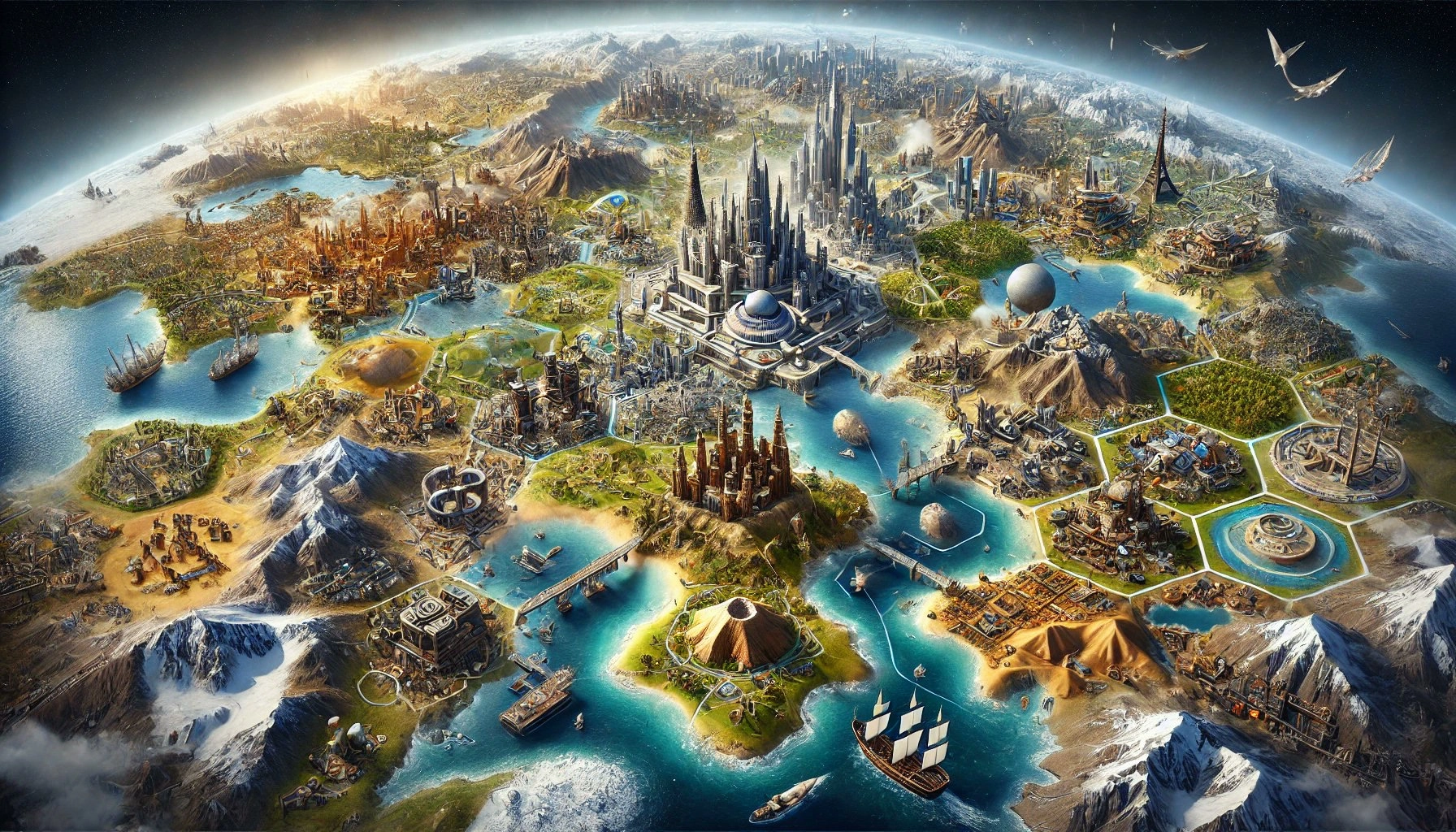Some find Computer Science and Software Engineering challenging. Indeed, coding elegantly and efficiently without bugs is a difficult art. With the advent of AI technologies like GPT-4, some might question the necessity of pursuing a formal education in these fields. They might argue, “If GPT-4 can handle coding, why should I study coding at a university?”
However, as computer scientists, technologists, or engineers, we should embrace AI as an empowering tool rather than a replacement. AI enables us to undertake larger, more complex projects that transcend simple tasks like creating extensions for a WordPress website. It offers the freedom to design entire systems comprehensively, enhancing both the scope and the impact of our work.
Moreover, AI assists in problem-solving by accelerating the research process, minimizing time spent consulting numerous textbooks and manuals. This capability allows for the delivery of higher quality products more efficiently, increasing satisfaction all around.
Yet, this does not diminish the value of formal education in Computer Science and Software Engineering. The field of IT is vast, with a plethora of programming languages and technologies. Universities are starting to recognize this diversity and are adapting their curricula to expose students to a wide range of technologies rather than solely focusing on mainstream languages like C++, Java, and JavaScript.
Understanding the fundamentals of programming and experiencing the ‘engineering process’ from start to finish are crucial. Each problem is unique and requires a nuanced approach. AI may not always provide the optimal solution, and as such, the directors and project leaders must be well-versed in the underlying technology to effectively manage and guide AI systems.
When AI generates code, it’s also creating new challenges and complexities. If one has never engaged with code—never learned to read or write it—the ability to understand and adapt to what AI is developing will be limited. The skill to interpret complex syntax and language remains essential, especially as AI continues to evolve and generate novel solutions.
Therefore, challenging oneself to stay abreast of advancements in AI and related technologies is more crucial than ever. As we move forward, those in STEM fields should see AI not as a deterrent to their education, but as a dynamic tool that complements and extends their capabilities.
In addition to this, AI in educational settings enhances learning by allowing students to bypass mundane aspects and dive into more complex problem-solving earlier in their education. This exposure not only prepares them for technical challenges but also develops critical thinking and adaptive skills that are vital for innovation.
Furthermore, the interaction with AI during the learning process introduces students to cutting-edge technology, encouraging them to think beyond traditional methods and to embrace new, sometimes uncharted, technological landscapes. This is essential for fostering a generation of technologists who are not only proficient in their fields but also pioneers of new technological frontiers.
Educational institutions, therefore, must not only continue to teach foundational skills but also integrate lessons on AI interaction, system design, and the ethical implications of technology. This will prepare students to harness AI effectively, ensuring they remain indispensable as architects of technology rather than mere users of advanced tools.
Explore the future of education with AI: #FutureOfEducation #AIInEducation #ComputerScience #SoftwareEngineering #TechInnovation #STEMEducation #GenerativeAI #GPT4 #GeminiAdvanced #GrokAI
Related Content:
@skillsgaptrainer “Title: ‘Enhancing Realism and Interaction: VASA, Microsoft Research Asia’s AI Framework for Generating Hyper-Realistic Talking Faces’
“VASA,” an innovative AI framework developed by Microsoft Research Asia, designed to generate hyper-realistic talking face videos from a single portrait photo and a speech audio clip. The model, VASA-1, stands out by generating videos where lip movements are perfectly synchronized with the audio, and it effectively captures a broad spectrum of facial expressions and head movements, enhancing the realism and liveliness of virtual characters.
Key innovations in VASA include a holistic model for facial dynamics and head movements that operates within a specially developed, disentangled face latent space. This design allows the technology to capture intricate facial nuances and natural head motions. Importantly, the system can generate high-quality videos (512×512 resolution at up to 40 frames per second) with minimal latency, which is ideal for real-time applications. For instance, this capability could potentially be exploited in scenarios where someone might use a photo to pretend they are someone else, raising ethical considerations that the developers are keenly aware of.
VASA’s ability to handle diverse inputs such as artistic photos and non-English speech—common challenges for conventional models—extends its utility significantly. Moreover, the model allows specific controls over the generated output, like the direction of gaze, the scale of head distance, and varying emotional expressions, offering a high degree of customization. This feature can be particularly useful for creators who need to produce content tailored to specific cultural contexts or emotional settings.
The developers of VASA emphasize the responsible use of this technology, pointing out its substantial benefits in fields like education, accessibility, and therapy. For example, curriculum developers who utilize AI to generate text can leverage VASA to create interactive educational content and lifelike talking-head content that enhances engagement, audience retention and learning outcomes. By generating lifelike animations of historical figures or fictional characters, educators can offer students a more immersive learning experience, and deploy more successful AI generated courses.
However, the technology also presents risks, particularly the potential misuse for creating deceptive content. The developers are committed to ensuring that VASA is used responsibly and are postponing any product or API release until they can guarantee that the technology will be used ethically and in compliance with stringent regulations. This cautious approach underscores the importance of balancing innovation with ethical responsibility in the deployment of advanced AI technologies.
Link: microsoft.com/en-us/research
@SkillsGapTrain Sid Meier’s Civilization
“Sid Meier’s Civilization” is a turn-based strategy game where players build and expand their civilizations through various aspects, including:
City Development: Building and expanding cities by constructing buildings and wonders.
Technology Research: Advancing through different eras by researching new technologies.
Diplomacy: Interacting with other civilizations through trade, alliances, and negotiations.
Military Strategy: Defending your civilization and potentially conquering others.
Economic Management: Managing resources, trade routes, and economic growth to support the civilization’s development.
Cultural Influence: Spreading cultural influence and achieving cultural victories.
While building economies and economic management are a significant part of the gameplay, the multiple aspects of civilization development requirements are interwoven with other elements such as military, technology, culture, and diplomacy.
This is a great game for kids to try. It might expand horizons, motivate leadership aspirations, and improve responsibility and constructive approach towards societies development.


@SkillsGapTrain @Conservative_BC “British Columbia (BC) is worth fighting for. It’s a vast and dynamic region with immense potential. If we don’t recognize its value, others surely will— and if they see us complacent, they may just take it for themselves.At Skills Gap Trainer (SGT), we recognize a gap in the education system, one that wasn’t filled during our own schooling in BC. We lack confidence in the education counsellors and administrators who are responsible for designing our educational programs and guiding our youth.
Over the past 35 years, the physical classrooms have seen little change or no change or maybe some decay — save for the addition of a coloured flag and empathy training instead of professional technical prioritization that is what the 21st century economy actually is (not the 20th century subjects they want to teach because the administrators know those subjects)— and it makes us question whether the curriculum itself has truly evolved or been modernized to meet professional standards.
We must have the courage to demand professional, practical skills training and to hold our education system to high standards. It’s time to equip the next generation with essential professional skills— including firearms education, public safety, national security, artificial intelligence program tracks (Ex: NVIDIA & Deep Learning AI), blockchain development, decentralized application development, and many other critical areas.
Related Books and Resources:
“Artificial Intelligence: A Guide for Thinking Humans” by Melanie Mitchell – This book provides a clear and accessible overview of AI, offering insights into its capabilities and challenges, perfect for understanding AI’s role in coding and software development.
“Life 3.0: Being Human in the Age of Artificial Intelligence” by Max Tegmark – Tegmark explores the future of AI and its impact on the world, touching on how AI can transform education and the professions.
“Superintelligence: Paths, Dangers, Strategies” by Nick Bostrom – A thorough look at the implications of advanced AI, which could be instrumental for those studying AI’s broader implications on software engineering and system design.
“Deep Learning” by Ian Goodfellow, Yoshua Bengio, and Aaron Courville – This textbook is essential for those interested in the technical details of how AI works, especially in the context of neural networks and machine learning.
“The Master Algorithm: How the Quest for the Ultimate Learning Machine Will Remake Our World” by Pedro Domingos – Domingos explains machine learning in accessible terms and discusses its potential to revolutionize all domains, including education.
“Weapons of Math Destruction: How Big Data Increases Inequality and Threatens Democracy” by Cathy O’Neil – This book explores the dark side of big data and AI, an essential read for understanding ethical implications in technology.
“Architects of Intelligence: The Truth About AI from the People Building It” by Martin Ford – Ford interviews top AI minds to discuss the future of AI, giving insights into how AI can be integrated into various fields, including education.
“Python Crash Course” by Eric Matthes – For those interested in the practical aspects of learning coding in the context of AI, this book is a great starting point.
“AI Superpowers: China, Silicon Valley, and the New World Order” by Kai-Fu Lee – This book offers a look at how AI is shaping global technology, relevant for understanding the international landscape of AI education and development.
“The Innovators: How a Group of Hackers, Geniuses, and Geeks Created the Digital Revolution” by Walter Isaacson – This book chronicles the history of the digital revolution, providing context for the current evolution of technology and AI’s role in it.
To see our Donate Page, click https://skillsgaptrainer.com/donate
To see our YouTube Channel, click https://www.youtube.com/@skillsgaptrainer
